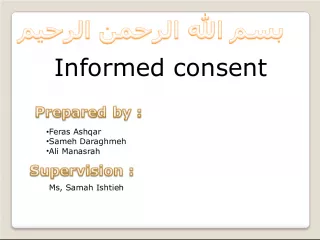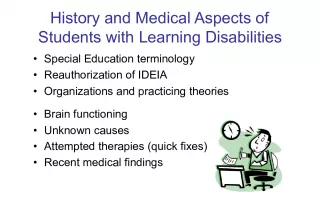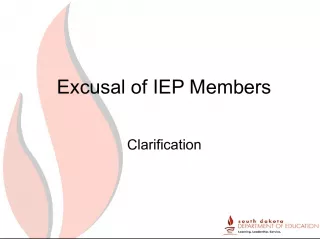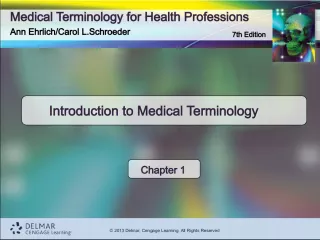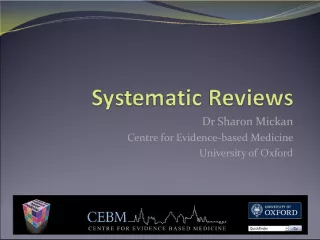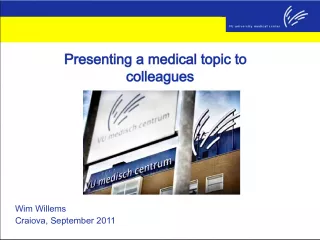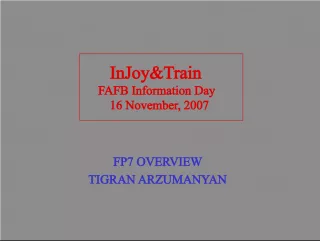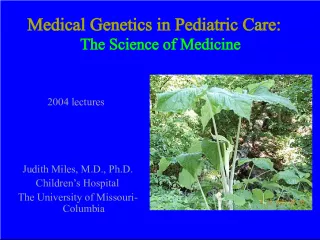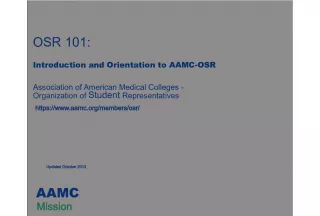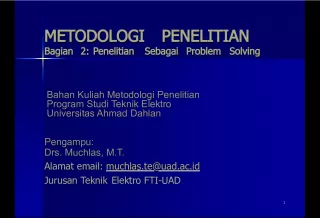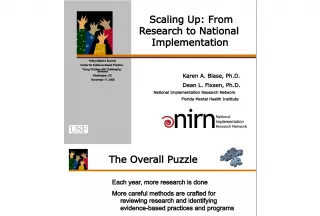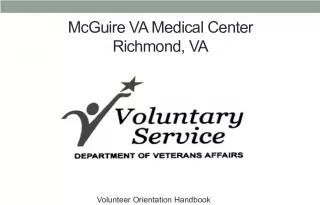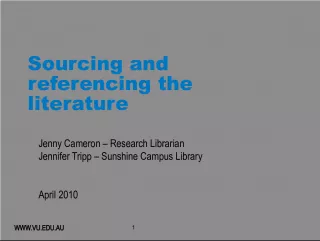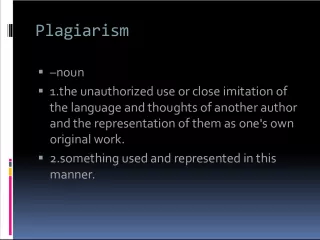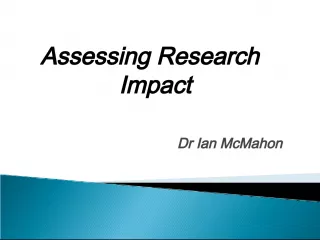Informed Consent in Medical Research
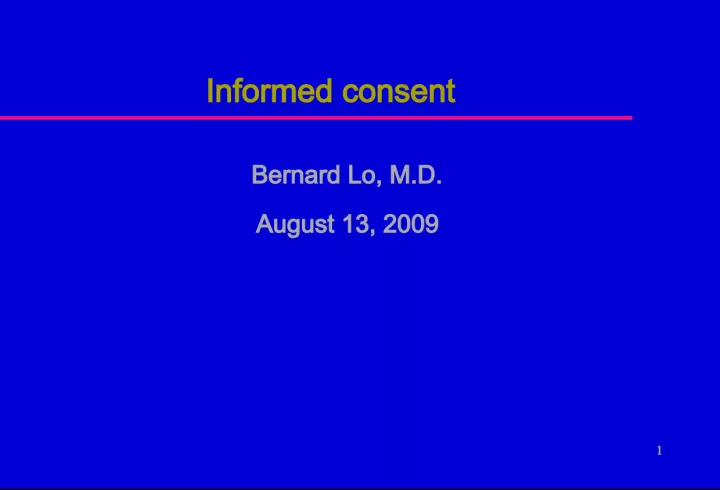

This article discusses the importance of informed consent in medical research and provides insights on using existing data, medical records, previous research datasets, and biological materials, including genomic analyses. It raises questions regarding the
- Uploaded on | 0 Views
-
 elvira
elvira
About Informed Consent in Medical Research
PowerPoint presentation about 'Informed Consent in Medical Research'. This presentation describes the topic on This article discusses the importance of informed consent in medical research and provides insights on using existing data, medical records, previous research datasets, and biological materials, including genomic analyses. It raises questions regarding the. The key topics included in this slideshow are . Download this presentation absolutely free.
Presentation Transcript
Slide11Informed consent Bernard Lo, M.D. August 13, 2009
Slide22Anyone doing project using Existing data? Medical records Previous research dataset Existing biological materials? Using genomic analyses?
Slide3Questions for audience After signing consent forms, do most participants understand key features of study? Do IRB modifications improve consent? 3
Slide44Outline for today What does informed and voluntary consent require? How can consent be improved? What are exceptions to consent? Why are some exceptions problematic?
Slide5Why is consent needed? Compared to clinical care Risks and benefits uncertain Risk/benefit balance less favorable Purpose is not to benefit participants 5
Slide6Rationale for informed consent Respect for values and choices of subjects Deter research with unacceptable risks 6
Slide77Federal requirements for research Review by IRB Risks / benefits acceptable Risks must be minimized
Slide88Federal requirements for research Informed and voluntary consent Concerns about undue inducement if payment Exceptions to consent • Not capable of consent (children, adults who lack decision-making capacity) • Impracticable to obtain consent
Slide991. HIV prevention trial RCT of diaphragm + gel vs. diaphragm + placebo in women in Africa at risk for HIV infection Both arms receive free condoms
Slide1111What must researchers disclose? Nature and purpose of research Research procedures, risks, benefits Unforeseeable risks Participation voluntary, may discontinue IRB template
Slide1212Why is informed consent difficult?
Slide1313Why is informed consent difficult? Participants commonly misunderstand Not understand how RCT differs from clinical care Believe that study interventions are • Standard therapy • Best treatment for condition • No additional risks • For their personal benefit
Slide1414Why is informed consent difficult? Participants commonly misunderstand Basic features of trial design • May be in control group • Randomization • Therapeutic options restricted by study design rather than individualized for them
Slide1515Why is informed consent difficult? Vulnerable participants Low health literacy, low literacy Poverty, few options Cultural context No informed consent in clinical care No acknowledgement of medical uncertainty
Slide1616How can informed consent be enhanced? Empirical studies Spend more time talking to participants Questions and feedback Shorter, simpler consent forms Multimedia -- mixed evidence
Slide1717How can informed consent be enhanced? Practical suggestions Take point of view of participant Use simple language that 8th grader can understand Explain how RCT differs from clinical care Invite questions
Slide1818How can informed consent be enhanced? Focus on comprehension by participant, not consent forms Administer questionnaire to ensure appreciation of key aspects of study
Slide1919What should participants comprehend?
Slide2020What should participants comprehend? Could still get HIV Don’t know whether intervention works May not get active intervention Keep using condoms every time
Slide2121What should participants comprehend? May refuse to participate May withdraw from study
Slide2222Questions?
Slide2323Why is voluntary consent difficult? Hard to say no to persons in power Defer to husband or father Relationship to investigator • Student • Employee Undue monetary influence
Slide2424Voluntary and free consent Historical concerns Prisoners, institutionalized persons Excluded from research
Slide2525Voluntary and free consent Undue influence Coercion = threat Threat to discharge from clinic Unspoken concerns in students, employees, patients of investigator
Slide2626
Slide27Research participants who may lackdecision-making capacity Persons receiving CPR, ICU care Severe dementia Severe psychiatric illness Children 27
Slide2828Research participants who may lack decision-making capacity Not appreciate risks Not able to refuse Might be subjected to risks that competent persons would refuse
Slide29Options if lack decision-makingcapacity Exclude from trials But lack evidence safety and effectiveness of treatments Additional protections 29
Slide3030Research participants who may lack decision-making capacity Formal assessment of decision-making capacity Permission from surrogate Assent of participant
Slide3131Additional protections for vulnerable partcipants Closer monitoring for adverse effects Subject advocate who can withdraw participant from study IRB include persons familiar with the condition that impairs capacity Research advance directives
Slide3232
Slide33Questions for audienceWithout consent, may researcher Use EMR to study whether patients have worse outcomes if admitted over weekend? Use leftover cancer tissue to identify prognostic markers? 33
Slide34Ethical rationale for exception fromconsent Very low risk No physical risks Confidentiality the main risk Cannot be breached if not identifiable Benefits of research >> risks 34
Slide35Ethical rationale for exception fromconsent Impracticable to get consent Could not carry out important study No one would or should object if asked Leftover tubes of blood Cancer tisssue 35
Slide3636IRB approval for exception to consent 1. Not human subjects research No IRB review Self-certification form 2. Exempt from human subjects regulations Exempt form reviewed at CHR 3. Qualifies for waiver
Slide37What is human subjects research? Interact with person OR Use identifiable private information Not human subjects research if data and materials cannot be identified Examples of tissue from cancer surgery 37
Slide38What is human subjects research? Data and materials are coded but researcher cannot access keys to code None of 18 HIPAA identifiers Code may be retained by database or biobank 38
Slide392. Exempt from federal regulations Most survey and interview research Unless subjects can be identified and responses could put respondents at risk • Not if ask about illegal activities, sensitive or private topics 39
Slide402. Exempt from federal regulations Existing data or materials Publicly available Existing data or specimens if researcher records information in manner than subjects cannot be identified • Can look at medical records 40
Slide41413. Waiver of consent Minimal risk Not adversely affect rights and welfare Could not be practicably carried out IRB may allow identifiable data to be used without consent Use identifiers to link different databases
Slide4242Questions?
Slide43Questions for audienceMay research be carried out on de- identified materials without consent? Whole genomic sequence? Derive new hESC line from “abandoned” frozen embryos? 43
Slide44How are embryos different fromother tissue? Some believe embryos are persons Emotional and symbolic significance Some may prefer to discard rather than donate for research 44
Slide45Exception to consent not justified Some donors known to object Even if no physical risk, not identifiable Materials considered sensitive, have symbolic value Object to certain types of research Respect minority of donors who have strong objections 45
Slide46Use of reproductive materialswithout consent Legally permissible Ethically problematic 46
Slide47Concerns about whole genomesequencing Subject may consider information very personal, may not want others to know Even if identity not explicitly known 47
Slide48Concerns about whole genomesequencing De-identified sample may be re- identified Genomic sequence widely shared Confidentiality may be breached 48
Slide5050Re-identification in whole genomic sequencing Reference samples in forensic databases DOJ has 7.3 million profiles STRs at 13 locations Full genome sequence identifies these STRs Re-identification low probability, high impact
Slide5151Re-identification in whole genomic sequencing Reference samples with SNPs at recreation genomics companies Companies not subject to HIPAA If bankrupt, confidentiality agreements voided
Slide5252What are the ethical dilemmas? When materials collected, whole genome sequencing not envisaged Donors not consider this possibility If donors had been told, would they object?
Slide53Options Re-consent participants? Selection bias in sample Make research much more difficult Strict security and confidentiality safeguards How share sequence with other researchers? 53
Slide54Take home message Consent is important but challenging Important exceptions to consent justified But some exceptions problematic 54
Slide5555
Slide5757Genome-wide association studies Specimens and clinical data in biobanks General consent for “research” at time of surgery Consent for “cancer” or “genetics” research Researchers get anonymized materials without consent
Slide5858
Slide5959
